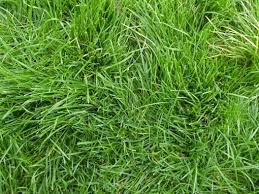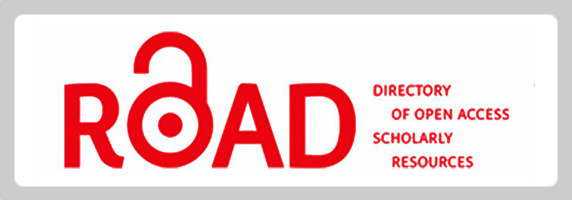Evaluating Nutritional Values of Selected Grass Species in Chaffe area,Hawassa, Ethiopia
Abstract
This study was conducted to evaluate nutritive value of grass species inChaffe communally grazing area.According to thefocus group discussion, three grass species (Pennisetumclandestinum, Chlorisgayana and Cynedemdactylon) were selected for chemical composition evaluation due to their preference for animals in this area. The variables recorded were dry matter (DM), ash, crude protein (CP), neutral detergent fiber (NDF), acid detergent fiber (ADF), and acid detergent lignin (ADL).Data on these values were subjected to the general linear model (GLM) procedure of SAS statistical package and usedTukey test means comparison procedure to separate difference among species. As seen from this study, DM values were 95.09%, 94.23% and 95.11% forPennisetumclandestinumChlorisgayana, and Cynedemdactylon, respectively and showed no variation among species (p>0.05). Current finding indicated 16.34%, 12.40% and 12.56% ash percentage forPennisetumclandestinum,Chlorisgayanaand Cynedemdactylon, respectively and seen variation(p<0.05) among species. It was also seen from current finding that CP values obtained 13.03%, 9.21% and 8.01% for PennisetumclandestinumChlorisgayanaand Cynedemdactylon, respectively were significantly different (p<0.05) among three grass species. Similarly, fiber contents (NDF 57.23%, 66.06% and 62.34% for PennisetumclandestinumChlorisgayanaand Cynedemdactylon, respectively; ADF 26.33%, 32.27% and 33.41% for PennisetumclandestinumChlorisgayanaand Cynedemdactylon, respectively and ADL 4.43%, 6.18% and 6.32% for PennisetumclandestinumChlorisgayanaand Cynedemdactylon, respectively) indicated significant variation (p<0.05) among grass species. However, Pennisetumclandestinum showed better quality among selected three grass species;according to standard the present study revealed high levels ofdetergent fibers for all three selected native grasses used mainly as forage for livestock in this area. So, this indicates need of improved forage and supplementary feed for livestock reared in this area to obtain better production for farmers from their animals.
Downloads
References
Adugna, T. (2007). Feed Resources for Producing Export Quality Meat and Livestok in Ethiopia. Ethiopia Sanitary and Phytosanitary Standards and Livestock and Meat Marketing Program (SPS-LMM) managed by Texas Agricultural Experiment Station (TAES) of Texas A & M University System.
Alemayehu, M and Sissay, A. (2003). Integrated Livestock Development Project (ILDP). Livestock Feed Resources Survey. North Gondar, Ethiopia pp: 75-82.
Alemayehu, M. (1997). Conservation based forage development for Ethiopia: Institute for Sustainable Development. Addis Ababa, Ethiopia. Pp 1-2.
Alemayehu, M. (2006). Forage resource profile of Ethiopia. FAO forage resource profile. FAO, Rome, Italy http://www.fao.org/ag/agp/AGPC/doc/counprof/
Ali, S. (2004). The effect of stubble height, Row spacing and subsequent harvests on dry matter yield, nutrient composition and In vitro organic matter digestibility of alfalfa (Medicago sativa L.) at South Wollo MSc Thesis. The School of Graduate Studies, Alemaya University, Alemaya, Ethiopia. 114p.
ARC. (1985). The nutrient requirements of ruminant livestock. Agriculture Research Center (ARC). Common wealth Agricultural Bureaux, Farnham Royal, UK.
Association of Official Analytical Chemists, (1990). Official methods of Analysis. 5th ed. AOAC. Inc. Arington, Virginia, USA. 1298p.
Birnin-Yauri H.B. Birnin- Yauri U.A., Maigandi S.A., and Mohammed A.A., (2012). Biomass estimation and some chemical composition of herbage at Dabagi farm grazing land, Usmanu Danfodiyo University, Sokoto- Nigeria. Basic Research Journal of Agricultural Science and Review ISSN 2315-6880 Vol. 1(2) pp. 27-30.
Chepape, RM., Mbatha, KR., and Luseba, D. (2011). Local use and knowledge validation of fodder trees and shrubs browsed by livestock in Bushbuckridge area, South Africa. Tshwane University of Technology Private Bag X680, Pretoria 0001, South Africa.
Crowder, L.V. and Chmeda, M.R. (1982). Tropical grassland husbandry. Longman, London, 562p. Eshete G (2002) An assessment of feed resources, their management andimpact on Livestock productivity in the Ginchi watershed area. MSc Thesis, Alemaya University, Ethiopia p: 171.
Dessie, G. (2007). Forest decline in south central Ethiopia: Extent, history and process (Doctoral dissertation). Institutionen för naturgeografi och kvartärgeologi.
Dirriba, G., Mekonen, H., Ashenafi M. and Adugna, T. (2012). Herbage yield, species diversity and Quality of Native grazing land vegetation under Sub humid climatic conditions of Western Ethiopia. E3 Journal of Agricultural Research and Development Vol. 2 (4). Pp.096-100.
Eshete, G. (2002). An assessment of feed resources, their management and impact on Livestock productivity in the Ginchi watershed area. MSc Thesis, Alemaya University, Ethiopia p: 171.
Gashaw, M. and Defar, G. (2017). Livestock feed resources, nutritional value and their implication on animal productivity in mixed farming system in Gasera and Ginnir Districts, Bale Zone, Ethiopia. International Journal of Livestock Production, Vol. 8(2), pp. 12-23.
Luseba, D. and Vander Merwe, D. (2006). Ethnoveterinary medicine practices among Tsongs speaking people of South Africa. Onderstepoort Journal of Research 73: 115-122.
Mannetje, Lt. (1978). Measuring quality of grassland vegetation.In: Lt` Mannetje (ed). Measurement of grassland vegetation and animal production. Bulletin of Common Wealth Agricultural Bureau of Pasture and Field Crops. No.52. Hurlet. UK. 63-91p.
McDonald, P., Edwards, Greenhalgh, J.F. and Morgan, C.A. (1995). Animal nutrition 5htedition. Longman. United Kingdom.
Moleele NM (1998) Encroacher woody plant browses as feed for cattle. Cattle diet composition for three seasons at Olifants Drift, south-east Botswana. Journal of Arid Environments 40: 255-268.
Norton, BW. (1982). Difference between species in forages quality. In: Hacker JB (ed.) Proceedings of international Symposium held at St. Luica, Queensland, Australia 24 to 28 September 1981. Nutritional limits to animal production from pastures. Commonwealth Agriculture Bureau, UK.
Seyoum, B., Getinet, A., Abate, T, and Dereje, F. (2001). Present status and future direction in feed resources and nutrition research targeted for wheat based crop livestock production system in Ethiopia. In: P. C. Wall (Eds.). Wheat and Weed: Food and Feed. Proceedings of Two Stakeholder Workshops. CIMMYT, Mexico City. Improving the productivity of Crop Livestock Production in Wheat-based Farming Systems in Ethiopia, Addis Ababa, 10-11 October 2000. pp. 207-226.
Taye, B. (2004). Effect of days of harvesting on yield chemical composition and In vitro organic matter digestibility of Pennisetum purpureum sole or intercropped with Desmodium intortum or Lablab purpureus., MSc Thesis the School of Graduate Studies of Alemaya University, Alemaya, Ethiopia. 69p.
Terefe, A. Solomon, M. and Lisanework, N. (2008). Management and utilization of browse species as livestock feed in semi-arid district of North Ethiopia. Livestock Research for Rural Development.
Teshome, A., Abule, E. and Lisanework, N. (2012). Evaluation of woody vegetation in the rangeland of Southeast Ethiopia. Int Res J Agri Sci Soil Sci 2: 113-126.
Van Soest, PJ. and Robertson, JB. (1985). Analysis of forage and fibrous foods. A laboratory manual for Animal science. Cornell University, Ithaca, NY, USA.
Van Soest, P. J. and J.B. Robertson, and B. A. Lewis, (1991). Methods for dietary fiber. Neutral detergent fiber and non-starch polysaccharides in relation to animal nutrition. Journal of Dairy Science 74, 3583-3597p.
Yihalem, D. (2004). Assessment of Botanical Composition and Stage of Harvesting of Selected Natural Pasture for Optimum Utilization as Hay at Andassa Livestock Research Center, Northwestern Ethiopia. M. Sc. Thesis. Alemaya University of Agriculture, Alemaya. 69 p.
Zinash S. and Seyoum B. (1991). Utilization of Feed Resources and Feeding systems in the Central zone of Ethiopia. In: Proceedings of the Third National Livestock Improvement Conference. Addis Ababa, Ethiopia, pp129-132.











